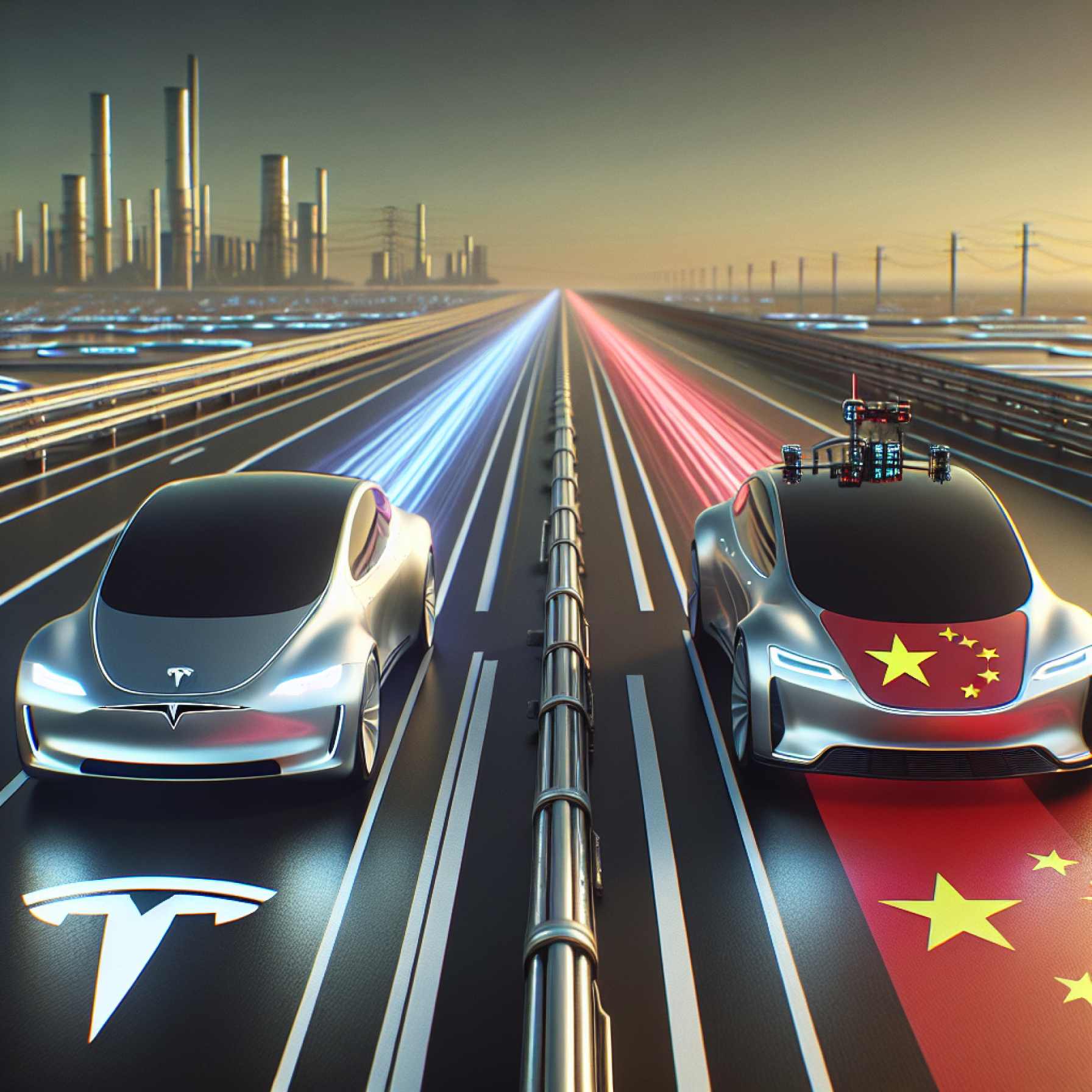- Tesla is at a crucial point in the race for autonomous technology leadership, positioning the U.S. against China’s rapid advancements.
- Beyond cars, Tesla’s innovation is driven by six core areas: data, robotics, AI, energy, manufacturing, and space exploration.
- The company leverages over 7 million data-gathering vehicles worldwide, with plans to expand to 100 million by 2035.
- Recent U.S. policy changes are fostering innovation, aiding Tesla’s push towards unsupervised autonomous driving in Texas.
- Tesla faces challenges, including stock market volatility, but its progress is vital for America to compete with China.
- The firm’s mission extends beyond EVs, aiming to redefine technological possibilities and secure America’s technological leadership.
Tesla stands at a pivotal crossroads, potentially leading America’s charge against China in the fierce competition for autonomous technology supremacy. In an era where AI and robotics are reshaping industries at an unprecedented pace, Tesla emerges not just as a car company but as a beacon of technological progress.
With its headquarters lighting up the Texas sky, Tesla weaves a compelling narrative of innovation. The firm, according to a recent analysis, harnesses the might of six indispensable pillars: data, robotics, artificial intelligence, energy, manufacturing, and, ambitively, space. With 7 million cars already serving as data generators on roads worldwide, each vehicle becomes a key player in the ever-evolving AI training and deployment arena. Tesla’s aspirations don’t stop here—they aim for their fleet to soar to 100 million by 2035.
China, with its swift production of drones and humanoid robots, threatens to eclipse the U.S. in the race for autonomous tech dominance. Yet Morgan Stanley suggests that without Tesla’s bold strides, America might find itself trudging behind.
Recent policy shifts signal a renewed vigor in the U.S. government, pushing for accelerated growth. The Department of Transportation and the National Highway Traffic Safety Administration have unveiled refreshed rules, enabling developers to seek exemptions from traditional safety regulations. This opens a door for innovation, and Tesla is poised to step through as they prep to launch unsupervised autonomous driving in Austin. Texas’s conducive regulatory climate could well serve Tesla’s ambitions.
Yet, the journey ahead isn’t without its hurdles. Recent dips in Tesla’s stock underscore the volatility of the path and the high stakes involved. But the message is clear: Tesla must not only innovate but continue at an unparalleled pace to bridge the competitive divide with China.
Ultimately, Tesla isn’t just about electric vehicles or self-driving cars. It’s about redefining what’s possible and anchoring America’s place at the forefront of technological innovation. If the U.S. is to challenge China’s ascent in autonomous technology, Tesla’s audacity and groundbreaking spirit might just be its greatest weapon.
Tesla’s Race to Autonomous Dominance: Can They Keep Up with China?
The Multi-Pillar Strategy: Tesla’s Key Advantages
Tesla has positioned itself as a trailblazer in the realm of autonomous technology, leveraging six fundamental pillars: data, robotics, artificial intelligence (AI), energy, manufacturing, and space exploration. Each Tesla vehicle functions as a moving data hub, feeding valuable information into the company’s AI systems. With a burgeoning fleet of 7 million cars, Elon Musk aims to expand this to 100 million by 2035, creating an unprecedented dataset for AI training and development.
How-To Steps: Understanding the Tesla Roadmap
1. Data Collection: Tesla vehicles continuously generate and transmit data, enabling the development of more sophisticated AI models.
2. Robotics and Manufacturing: Advanced robotics and automation optimize production lines, increasing efficiency.
3. Artificial Intelligence: Tesla’s AI systems aim to achieve full self-driving capabilities, improving safety and user experience.
4. Energy Solutions: Through Tesla Energy, the company integrates renewable energy sources, such as solar and battery technology, into its ecosystem.
5. Space Exploration: Tesla collaborates with SpaceX, pushing the boundaries of what’s achievable in space technology.
6. Regulatory Navigation: Tesla actively works with regulators to shape policies that encourage innovation.
Market Forecasts & Industry Trends
Tesla could face stiff competition from Chinese companies, which are rapidly accelerating their production of drones and humanoid robots. As more nations invest heavily in AI and robotics, Tesla will need innovative strategies and partnerships to maintain its edge.
Pros & Cons Overview
Pros:
– A robust data network from millions of vehicles.
– Advanced AI and robotics technology.
– Integrated energy solutions.
– Favorable regulatory environment in certain U.S. states like Texas.
Cons:
– Increasing competition from China.
– Regulatory challenges in other parts of the world.
– Stock market volatility.
Insights & Predictions
As autonomous technology becomes more mainstream, Tesla’s comprehensive approach may give it an edge over Chinese competitors. However, maintaining this advantage will require continual innovation and likely partnerships with tech giants or regional players in Asia and Europe.
Actionable Recommendations
1. Invest in Continued R&D: Keep a strong focus on developing next-gen AI capabilities and energy solutions.
2. Expand Strategic Partnerships: Collaborate with global tech firms to enhance growth opportunities outside the U.S.
3. Engage Regulators: Actively participate in shaping policies that influence autonomous technology on a global scale.
4. Focus on Consumer Education: Increase transparency on the benefits and safety of autonomous vehicles to boost consumer confidence.
Quick Tips
– Keep an eye on Tesla’s quarterly financial reports for insights into their investment in R&D and future projects.
– Watch regulatory updates from the U.S. Department of Transportation and the National Highway Traffic Safety Administration for changes affecting autonomous driving.
For more information on Tesla’s innovations, visit the official Tesla website.
Tesla’s leadership role in this tech race will be determined by its ability to adapt and innovate while tackling regulatory and market challenges. As the landscape evolves, staying informed and agile will be crucial for stakeholders at every level.
